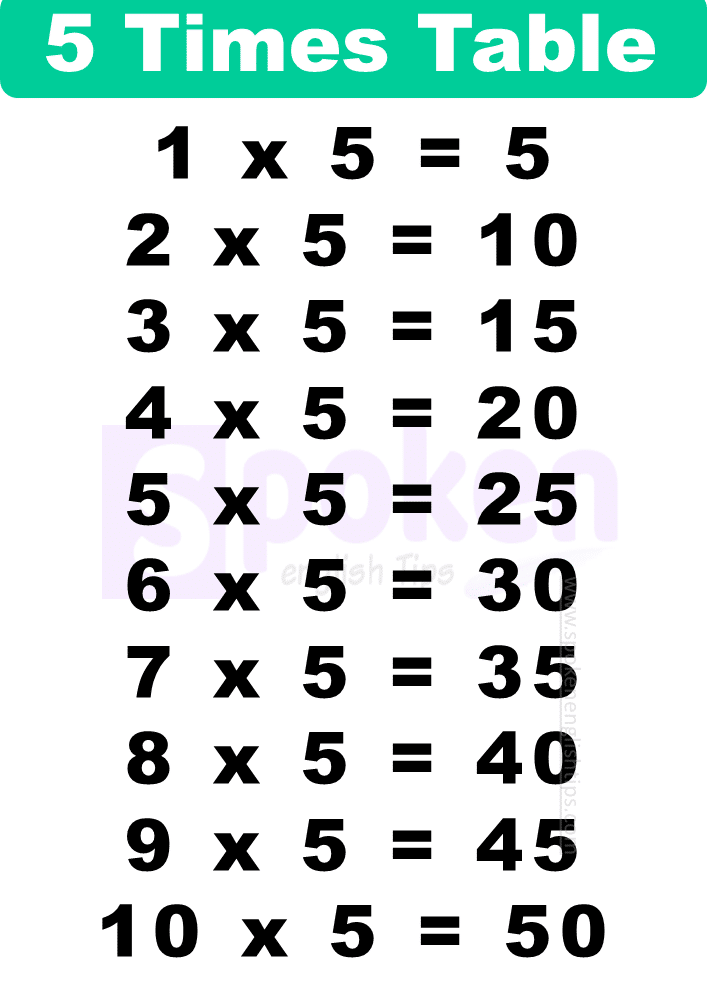Multiplication Calculator
In this blog post, you’ll learn all about the 5 times table.Whether you’re a student struggling with math or a teacher looking for new resources, this post will help you master the 5 times table in no time.
5 Times Table
Learning multiplication tables is an essential part of any math curriculum. Among all the multiplication tables, the 5 times table is one of the easiest to master. By understanding and memorizing the 5 times table, students can quickly calculate simple math problems and build a solid foundation for more advanced math concepts. In this post, we’ll explore the 5 times table in-depth, including its multiples, exercises, and frequently asked questions.
5 Times Table Chart

Examples 1 to 10 multiples:
1 x 5 = 5
2 x 5 = 10
3 x 5 = 15
4 x 5 = 20
5 x 5 = 25
6 x 5 = 30
7 x 5 = 35
8 x 5 = 40
9 x 5 = 45
10 x 5 = 50
Exercise: Now that you’ve seen the multiples of the 5 times table, it’s time to test your knowledge. Here’s an exercise to help you memorize the multiples of 5.
Fill in the blanks:
- 6 x __ = 30
- 4 x __ = 20
- __ x 5 = 25
- __ x 5 = 40
- 7 x __ = 35
Answers:
- 5
- 5
- 5
- 8
- 5
Check Also:
FAQs:
Why is it important to learn the 5 times table?
Learning the 5 times table is essential because it helps students develop a strong foundation in math. Multiplication is a fundamental math concept that is used in many everyday situations, and mastering the 5 times table makes it easier to solve more complex math problems in the future.
How can I memorize the 5 times table more easily?
There are several strategies that can help you memorize the 5 times table. One popular method is to use flashcards or a multiplication table to practice regularly. You can also try memorizing the multiples in groups, such as 5, 10, 15, 20, and so on, to make it easier to remember.
What are some real-world applications of the 5 times table?
The 5 times table is used in many everyday situations, such as calculating prices at the grocery store or figuring out how much time has passed. It’s also important in more advanced math concepts, such as algebra and geometry.